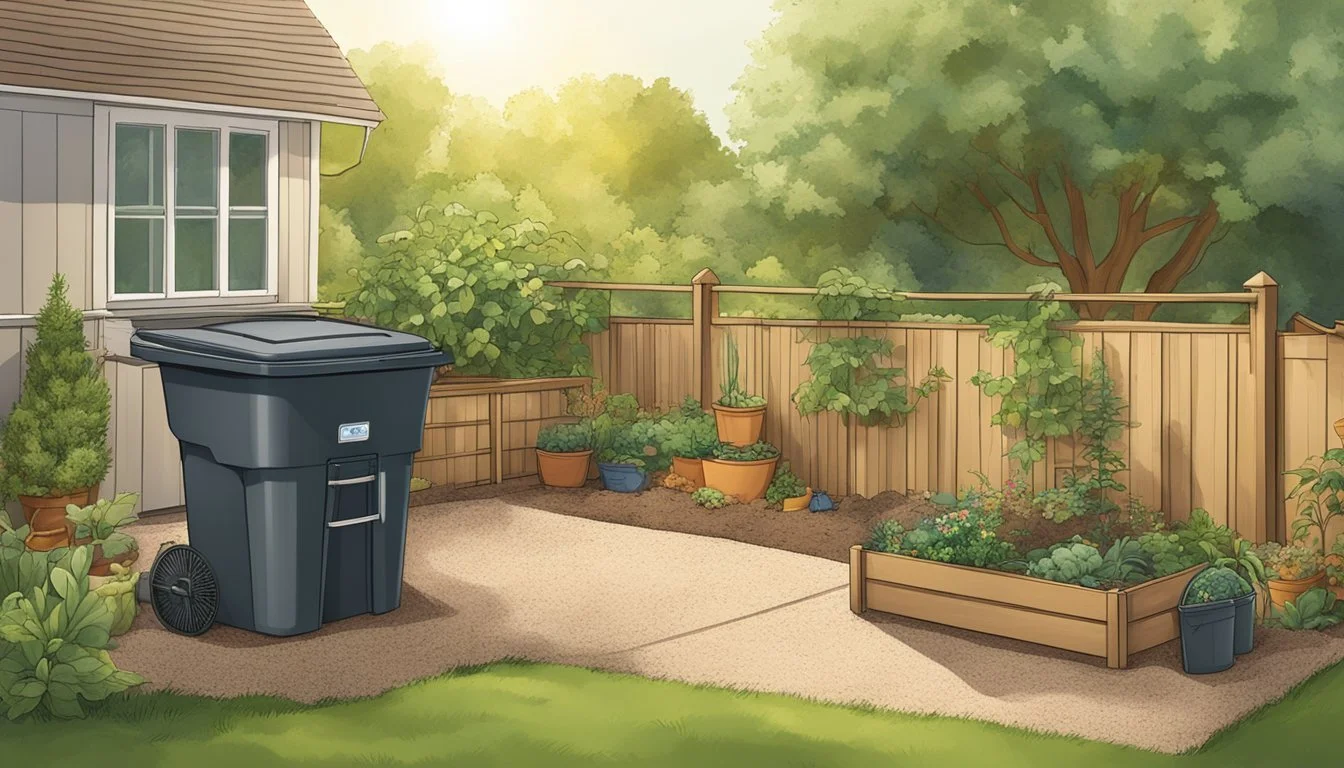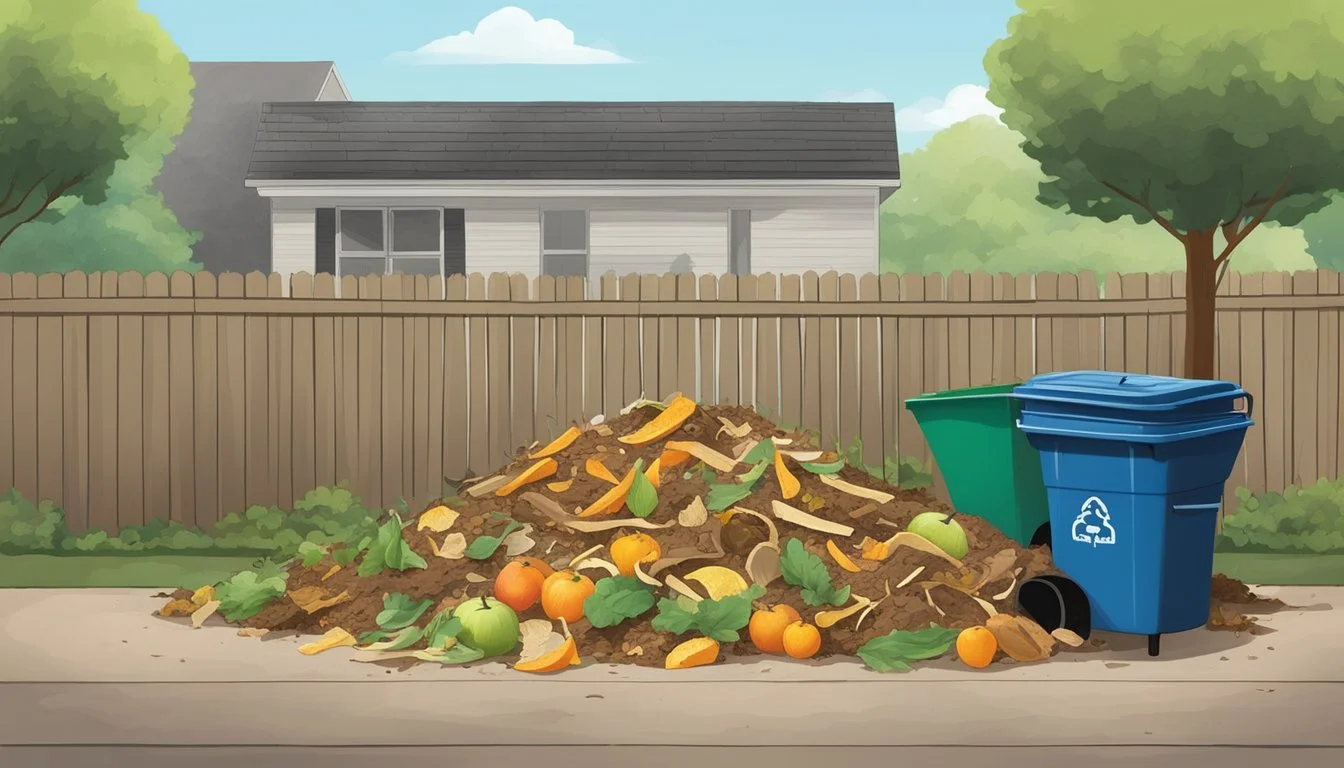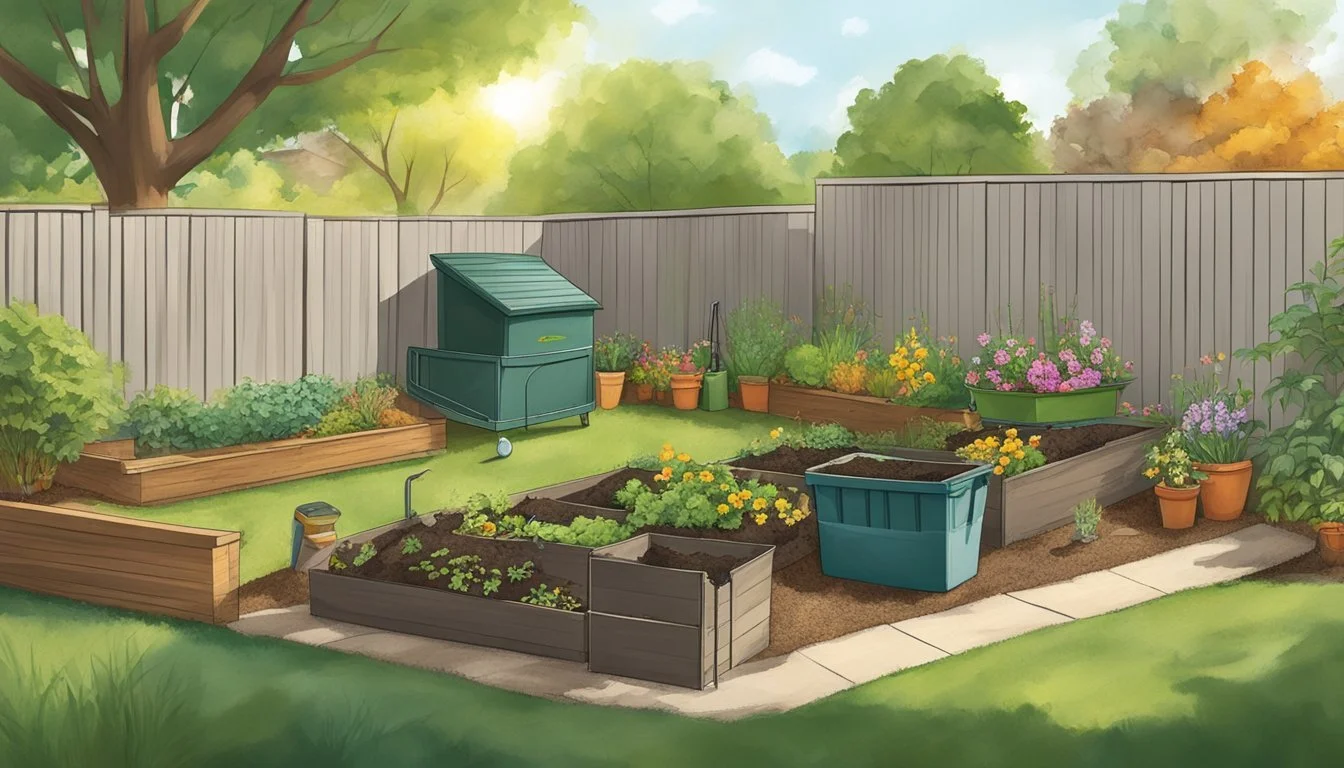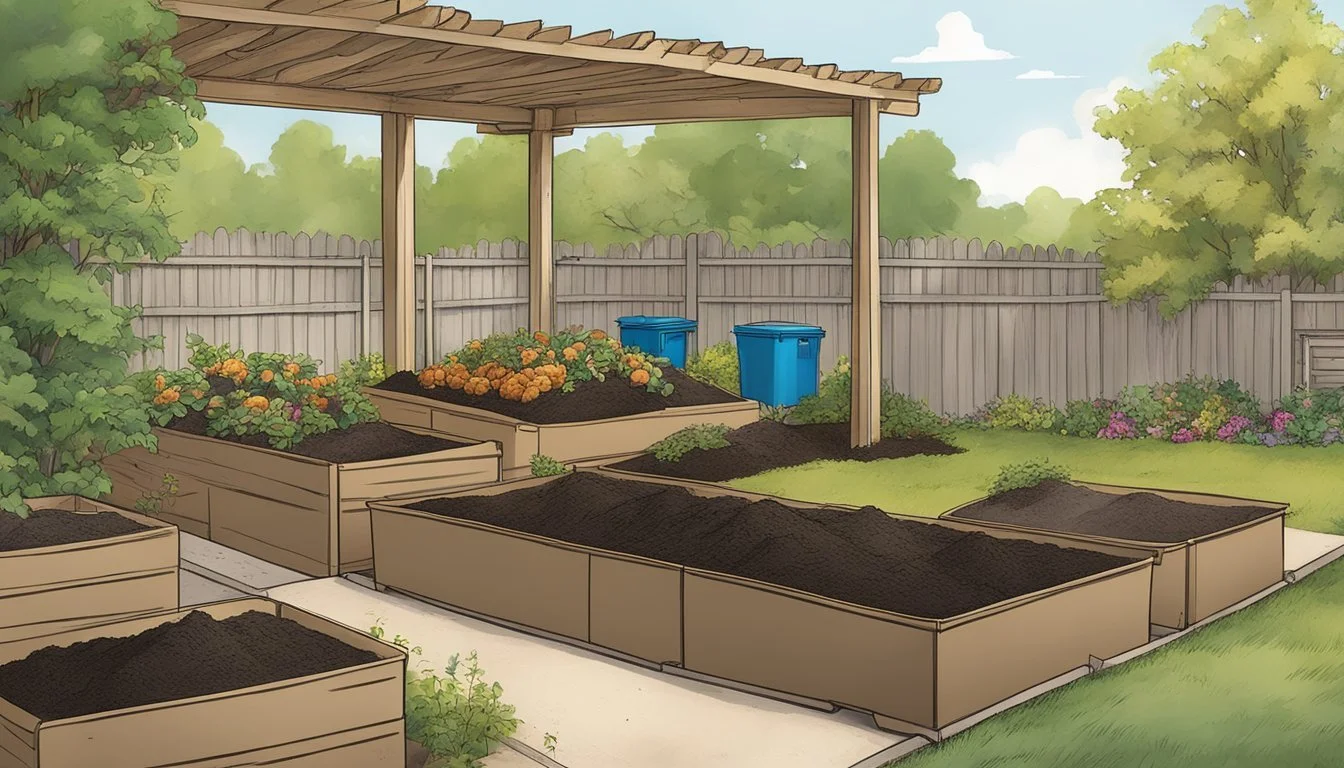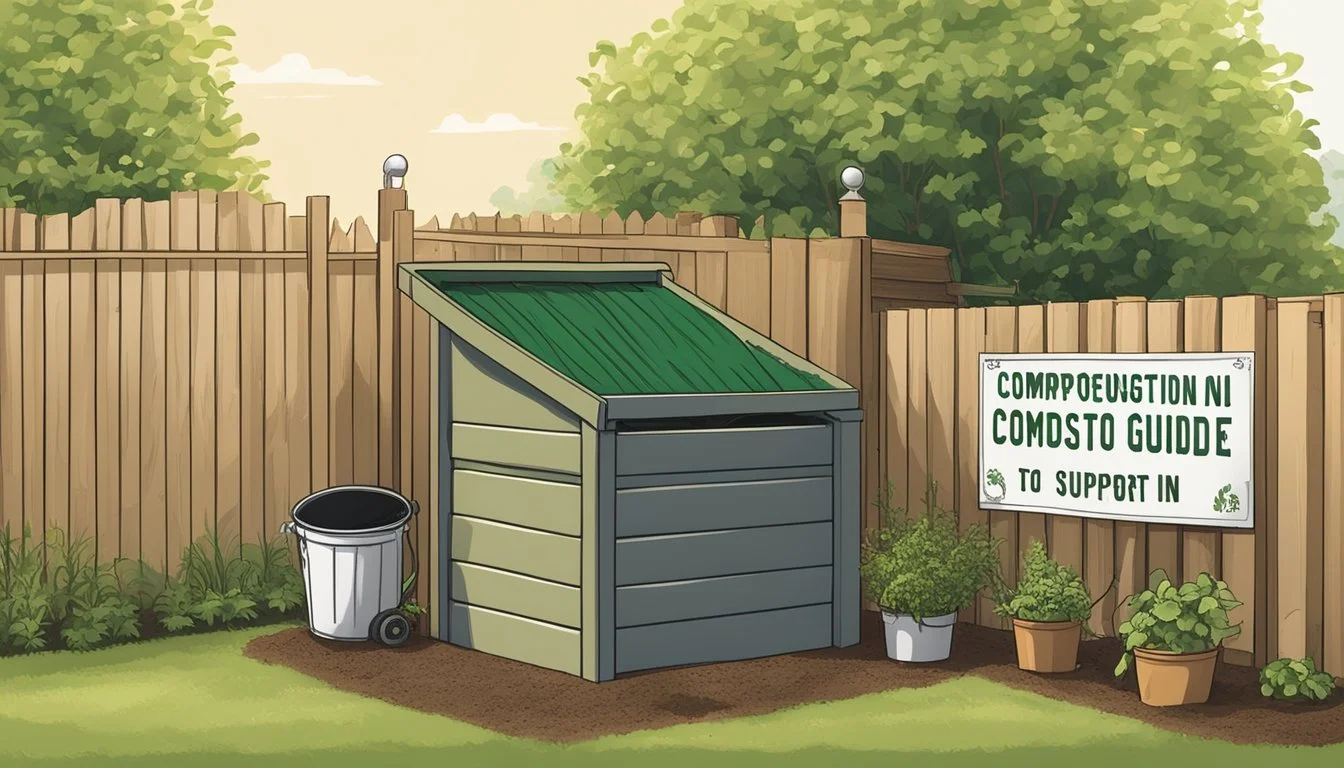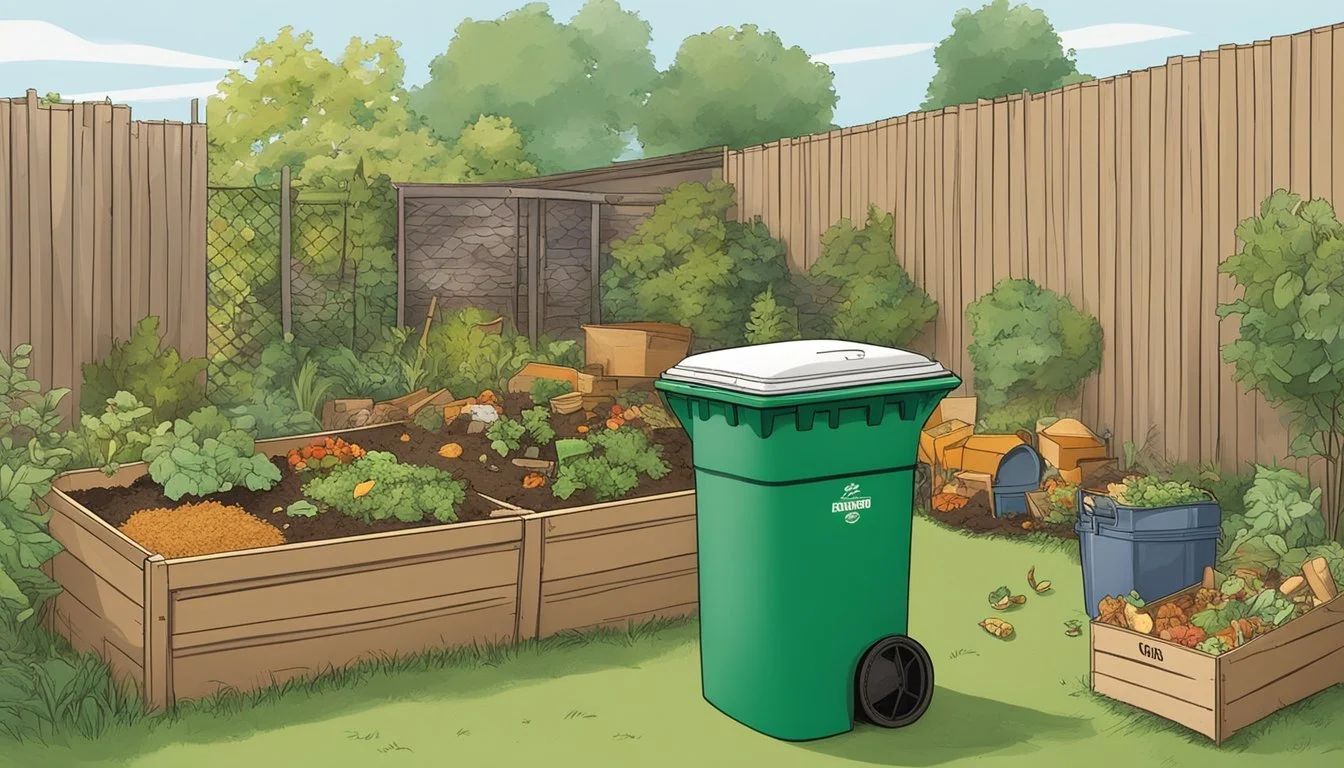Guide to Composting in Topeka, KS
Essentials for Successful Soil Enrichment
Composting in Topeka, Kansas, offers residents the opportunity to transform organic waste into a valuable resource. Compost, a nutrient-rich soil amendment, is the product of decomposing organic materials like leaves, kitchen scraps, and yard waste. Through natural processes, these materials break down into humus—a dark, rich substance that enhances soil quality. Residents can participate in composting to reduce waste sent to landfills, thus benefiting the environment and promoting sustainable gardening practices.
The City of Topeka supports composting initiatives by providing guidelines that ensure the process is efficient and safe. Homeowners and community members can learn the fundamentals of starting and maintaining a successful compost pile. With the right balance of carbon-rich "browns" and nitrogen-rich "greens," along with appropriate moisture and aeration, composting can be done effectively in backyards throughout the city.
Local government and environmental organizations, such as Kansas State University, provide resources that guide individuals on how to select an appropriate site for composting and how to manage their compost to avoid potential issues like odors or pests. Whether for personal gardening or contributing to larger community gardens, composting in Topeka is a pragmatic step towards more sustainable living and waste reduction.
Basics of Composting
When discussing composting practices in Topeka, KS, one must understand the core concepts, the science at work, and the environmental benefits offered. This segment explores such elements in detail.
What Is Composting?
Composting is the natural process of recycling decomposed organic materials into a rich soil amendment known as compost. It transforms organic waste like leaves, vegetable scraps, and lawn clippings into a valuable resource for enhancing soil.
The Science Behind Composting
The process relies on the breakdown of organic matter by microorganisms such as bacteria and fungi, in the presence of air and moisture. These microbes generate heat and consume oxygen while transforming the material into a nutrient-rich, humus-like substance.
Benefits of Composting
Composting offers multiple environmental advantages: it reduces the amount of waste sent to landfills, mitigates greenhouse gas emissions, and enriches the soil. By adding compost to gardens and landscapes, one can improve soil health and boost plant growth, aiding the environment in Topeka, KS.
Setting Up a Compost System
Properly setting up a compost system in Topeka, KS requires selecting an appropriate compost bin, finding the best location, and understanding the importance of maintaining the correct balance of green and brown materials.
Choosing a Compost Bin
Composting in Topeka starts with selecting the right compost bin. Options range from simple open piles that can be made without purchasing any materials, to closed bins which help in pest control and speeding up the composting process. Closed bins can be built using pallets or purchased ready-made. They need to provide adequate aeration and must be sturdy enough to withstand weather conditions.
Location and Setup
The location of your compost bin is critical for effective composting. Choose a dry, shady spot near a water source for convenience. It should be placed on soil or grass to allow organisms from the ground to aid in decomposition. When setting up, ensure the bin is level and has good drainage to prevent water from pooling.
Green and Brown Materials Ratio
The right mix of green and brown materials is crucial to a healthy compost pile. Green materials are rich in nitrogen and include yard waste like grass clippings and vegetable scraps, while brown materials provide carbon and include items like leaves, twigs, and wood chips. A general ratio to aim for is 1 part green to 2 parts brown, as this fosters optimal decomposition.
Materials and Ingredients
In Topeka, KS, successful composting is dependent on a careful balance of green and brown materials. These categories include a variety of household and yard waste that can contribute to a nutrient-rich compost.
What to Compost
Most organic waste from the garden and kitchen is ideal for composting. It's beneficial to maintain a balance between 'greens' which are high in nitrogen, and 'browns' which are high in carbon.
Greens include:
Grass clippings
Food waste such as vegetable scraps and fruit peels
Coffee grounds
Tea bags (make sure they are not made with synthetic fibers)
Browns consist of:
Leaves
Straw
Shredded newspaper
Cardboard (free of inks and adhesives)
Incorporating a mix of these materials will ensure that the compost is aerated and moist, fostering the microbial activity necessary for decomposition.
Items to Exclude
While many kitchen and yard scraps are compostable, certain items should never be included to avoid attracting pests, creating odors, or spreading disease.
Do not compost:
Dairy products
Meat or meat scraps
Bones
Diseased plant material
Colored or glossy paper
Always exclude materials treated with chemicals or pesticides, as these can persist in the compost and affect the safety of using it in gardens.
Composting Methods
In Topeka, residents can take advantage of two effective composting methods: Traditional Composting and Vermicomposting, both of which can significantly enrich soil quality.
Traditional Composting
Traditional composting involves creating a compost pile where yard waste, kitchen scraps, and other organic materials decompose over time. The composting process requires a balance of green materials (rich in nitrogen) and brown materials (rich in carbon). For optimal decomposition, the pile should be turned regularly to add oxygen, which accelerates the breakdown of materials. Moisture is crucial as well; the compost should be as wet as a wrung-out sponge. Topeka's varied climate can affect composting speed—warmth and moisture lead to a quicker process.
Vermicomposting
Vermicomposting uses earthworms, typically red wigglers, to break down organic material more quickly than traditional compost methods. This type of composting is ideal for indoor spaces or environments where traditional outdoor composting might not be feasible. One keeps the worms in a bin with bedding material like shredded newspaper and feeds them kitchen scraps. They require adequate moisture and temperatures between 55°F and 77°F. Vermicomposting produces both nutrient-rich solid compost and "worm tea," a potent liquid fertilizer. The City of Topeka recognizes the efficiency of vermicomposting as a method that not only reduces waste but also produces compost that is rich in nutrients.
Maintaining Your Compost Pile
A well-maintained compost pile is essential for converting organic materials into nutrient-rich compost. Proper aeration and moisture control are pivotal to promote microbial activity and prevent issues such as odor and disease.
Aeration and Moisture Control
Aeration is crucial to maintaining a compost pile as it allows oxygen to reach the microorganisms that break down organic matter. Gardeners should turn their compost pile regularly, ideally once every week or two, to ensure adequate oxygen flow. The introduction of air can be facilitated by using tools like a compost aerator or a simple garden fork to fluff and mix the materials.
In regards to moisture, a compost pile should feel like a wrung-out sponge; moist but not soggy. Topeka residents should add water to their dry compost or dry materials like straw or leaves to overly wet compost. One should be mindful of the local weather conditions, as Topeka can experience heavy rainfall or dry spells that might affect the compost pile's moisture levels.
Monitoring Pile Temperature
A clear indicator of a compost pile's health is its temperature. The ideal range is between 140°F to 160°F, which indicates that microorganisms are actively decomposing the organic materials. A lower temperature suggests that the pile needs more green material or water, while a higher temperature may require turning the pile to cool it down.
One can monitor the temperature using a compost thermometer, which should be inserted into the center of the pile. If the center is significantly warmer than the edges, this is a sign that the pile should be turned to distribute the heat evenly and ensure that all materials break down uniformly.
By carefully managing aeration and moisture and monitoring the pile's temperature, composters in Topeka can generate high-quality compost that will enrich their soil with water-retentive, nutrient-dense material.
Using Your Compost
Once your compost has matured into a stable, humus-like product, it is ready to be used to enrich garden soil and promote plant growth. This section provides guidance on harvesting your compost and its applications in the garden.
When and How to Harvest Compost
Timing is crucial when harvesting compost. Mature compost should resemble dark, crumbly topsoil and have a pleasant, earthy odor. If it meets these criteria, it's ready for use. To harvest, simply sift through the compost pile and scoop out the finished material, leaving behind any un-decomposed items to continue breaking down.
Method:
Use a shovel or compost fork to turn the pile, bringing the bottom materials to the top.
Extract the finished compost from the center of the pile where decomposition is most advanced.
Employ a screen to separate finer compost for immediate use, allowing larger pieces to continue decomposing.
Applications in the Garden
Compost is versatile and can be used in various ways within a garden setting:
Soil Amendment: Mix compost with garden soil to improve its structure, which in turn encourages healthy root development. A recommended ratio for mixing is 3 parts soil to 1 part compost.
Mulch: Spread a 2-3 inch layer of compost on top of the garden soil around plants. This helps retain moisture, suppress weeds, and slowly releases nutrients.
Plant Growth: Incorporate a half-inch layer of compost into the top few inches of soil to stimulate plant growth, particularly in annual garden beds.
Lawn Care: Sprinkle a thin layer of fine compost over the lawn as a top dressing to enhance the soil quality and support the health of the grass.
By understanding the appropriate methods for harvesting compost and its beneficial uses in the garden, it is possible to make full and effective use of this rich, organic resource.
Community and Environmental Impact
Composting initiatives in Topeka and Shawnee County, Kansas, lead to significant benefits regarding waste reduction, soil health, and community engagement in environmental practices.
Composting in Topeka and Shawnee County
Topeka and Shawnee County have embraced composting as a means to transform organic material into valuable humus-like products for the local landscape. Through the Kansas Department of Health and Environment, the process is defined and regulated, ensuring that the resultant compost is nuisance-free and beneficial to the soil. Community participation in composting directly affects the reduction of organic waste sent to landfills, therefore diminishing methane emissions and contributing positively to the environment.
Local Composting Programs and Events
A variety of local composting programs foster environmental stewardship within the community. Kansas State University frequently conducts educational events on the best composting practices and its impact on soil health. The community is further encouraged to participate in recycling and composting efforts through programs tailored to efficiently manage yard waste at a municipal level, as detailed in guidebooks made available on related websites. These initiatives not only promote recycling but also provide opportunities for Topeka residents to engage with and contribute positively to their community and the environment at large.
Advanced Composting Techniques
In the context of Topeka, KS, advanced composting techniques take into account the variety of soil compositions and seasonal conditions to optimize composting efficacy.
Composting for Different Soil Types
Composting can significantly enhance various soil types found in gardens throughout Topeka. For clay soil, which tends to be dense and may drain poorly, incorporating compost helps to improve drainage and aeration. Organic materials such as fallen leaves and kitchen scraps are ideal for this soil type as they break down and create channels for air and water. In contrast, sandy soil, characterized by its loose structure and quick drainage, benefits from compost’s ability to retain moisture and nutrients. Blending compost into sandy soil increases its ability to hold water and support plant roots.
Composting in Different Seasons
The process of composting in Topeka is influenced by the changing seasons. In the spring, the focus is on amassing organic materials that have accumulated over the winter, providing a rich starting material for the compost pile. As summer brings warmth, it accelerates the decomposition process; managing moisture becomes crucial, and one must ensure the compost remains as damp as a wrung-out sponge, avoiding oversaturation. Come fall, Topeka residents can benefit from adding the abundance of fallen leaves to their compost piles, which provide carbon-rich material. During the winter months, although the decomposition rate slows, maintaining the pile and guarding against freezing by covering it can yield continual composting results.
Troubleshooting Common Composting Problems
When managing a compost pile in Topeka, KS, one may encounter several common issues that can hinder the composting process. Here are some straightforward solutions to these problems:
Odor: A healthy compost pile should have a pleasant, earthy smell. If the pile emits a foul odor, it could signify anaerobic conditions, implying that the pile is not aerated sufficiently. Turning the pile over to introduce more air can often rectify this issue. Persistent smell issues may be due to an excess of green, nitrogen-rich materials. Balancing this with brown, carbon-rich materials can mitigate odor problems. Learn more about managing smelly compost here.
Diseases: To prevent the spread of diseases in compost, it is crucial to avoid composting diseased plants. The pile should also be maintained at the right temperatures to kill potential pathogens.
Insects: If a compost pile attracts unwanted insects, often the issue can be traced back to adding materials that shouldn’t be composted, such as meat or dairy products. Keeping such items out of the compost bin and ensuring a proper balance between greens and browns can reduce insect attraction.
Compost Bin Maintenance: Regularly turning the compost in the bin can prevent many common problems associated with composting. A well-maintained bin should also have proper drainage and airflow to facilitate the decomposition process.
Remember that a successful compost pile requires a balance between green and brown materials, moisture, and sufficient aeration. Adhering to the basics of composting will solve most problems and yield nutrient-rich compost for garden use.
Composting Regulations and Support
The state of Kansas maintains specific regulations for composting, and there are resources available to assist residents in properly managing their compost.
Permitting and Regulations in Kansas
In Kansas, the Department of Health and Environment (KDHE) oversees the composting regulations. Composting is defined as a controlled process of microbial degradation of organic material into a stable product. Notably, ordinary household composting is typically exempt from permitting. However, operations surpassing half an acre in size must adhere to K.A.R. 28-29-25a, being cautious of odor and nuisances. It's essential to confirm with local health and law enforcement officials whether additional municipality requirements apply.
Resources and Support for Kansans
To facilitate effective waste management, KDHE provides guidance through its publications, like the Composting Guide for Kansas Communities and Businesses — a comprehensive resource that helps city, county, and regional officials develop sound composting programs. Furthermore, Kansans looking to reduce landfill impact can access support through organizations like the Kansas Organization of Recyclers. These entities offer practical advice on enriching soil using compost, highlighting the benefit of diverting waste from landfills. For issues like household hazardous waste, KDHE staff can provide assistance to ensure environmental safety and compliance.
Frequently Asked Questions
What materials can be added to a compost bin in Topeka, KS?
Residents can add fruit and vegetable scraps, eggshells, coffee grounds, tea bags, leaves, grass clippings, and yard waste. However, they should avoid adding meats, dairy products, fats, and diseased plants which might attract pests or cause diseases in the compost.
How often should one add water to their compost pile?
Compost piles require moisture to facilitate the decomposition process, but they should not be soggy. Gardeners should aim to keep their compost pile as damp as a wrung-out sponge, adding water as necessary when the compost feels dry.
Why is my compost not breaking down properly?
An improperly balanced compost may not decompose effectively. This could be because of an imbalanced ratio of green to brown materials, insufficient moisture, lack of aeration, or large pieces that need more time to break down. Residents should ensure they have a mix of nitrogen-rich green materials like vegetable scraps and carbon-rich brown materials like dry leaves.
Troubleshooting Tip Suggested Action Compost is too dry Add water to moisten Compost is too wet Add brown materials Compost is not heating up Turn the pile to aerate Bad odor from the bin Turn the pile, add browns
Does composting provide nutrients for garden plants?
Absolutely. Compost enriches the soil with nutrients that plants need to grow and can also help the soil retain more water. Compost's gradual nutrient release is highly beneficial for garden health.
Residents can find more detailed guidance on composting best practices in Kansas.
Conclusion
In Topeka, KS, the practice of composting offers a substantial benefit not only to personal gardens but also to the broader ecosystem. Residents can transform organic waste into a nutrient-rich amendment for soil, improving its structure, fostering beneficial microbial activity, and supporting plant growth. The process, when managed properly, is an efficient way to reduce landfill waste and decrease greenhouse gas emissions.
For those looking to start composting, the Kansas Organization of Recyclers provides valuable insights into the practice. Educating oneself through resources offered by Kansas State University is a step in the right direction for community members aiming to implement effective composting strategies.
Local programs, under the guidance of the Kansas Department of Health and Environment, are instrumental in advancing composting efforts in both communities and businesses. They ensure that the environmental impact is minimized while maximizing the utility of organic waste.
Residents are encouraged to familiarize themselves with the state's regulations and to identify the most effective methods for starting or improving their own composting operations. Whether one is a novice or an experienced composter, ongoing education and adherence to best practices will prove beneficial for the individual and the community alike.
By embracing composting, Topekans actively contribute to a sustainable future and enhance the health of the local environment. The collective effort speaks volumes about the community's commitment to ecological responsibility and resilience.


